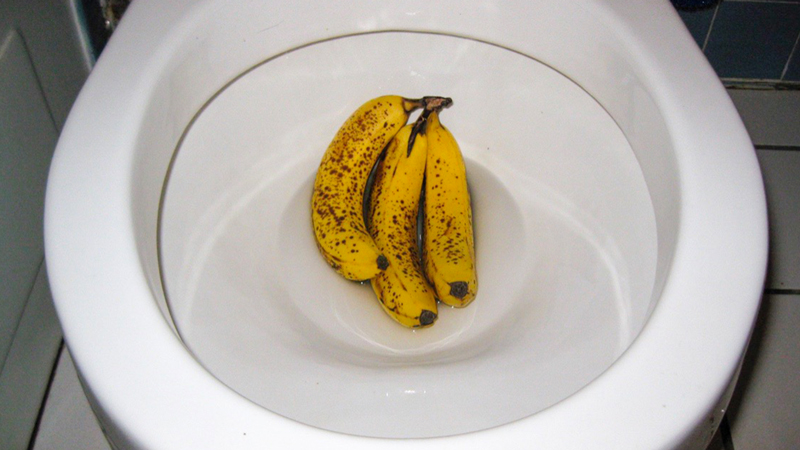Is it Appropriate to Flush Food Down the Toilet?
Is it Appropriate to Flush Food Down the Toilet?
Blog Article
Are you interested in advise around What Can Happen If You Flush Food Down the Toilet??

Introduction
Lots of people are often faced with the problem of what to do with food waste, particularly when it involves leftovers or scraps. One typical concern that develops is whether it's alright to purge food down the bathroom. In this short article, we'll delve into the reasons why individuals might take into consideration purging food, the consequences of doing so, and different techniques for correct disposal.
Reasons individuals might take into consideration purging food
Absence of recognition
Some people may not understand the possible harm triggered by flushing food down the toilet. They might mistakenly believe that it's a safe technique.
Benefit
Purging food down the commode might seem like a fast and very easy solution to disposing of unwanted scraps, especially when there's no neighboring garbage can readily available.
Idleness
In many cases, people might just pick to flush food out of sheer laziness, without considering the repercussions of their actions.
Effects of flushing food down the commode
Environmental impact
Food waste that winds up in rivers can contribute to air pollution and harm water communities. Additionally, the water utilized to flush food can strain water sources.
Pipes concerns
Purging food can lead to stopped up pipelines and drains pipes, triggering expensive plumbing fixings and inconveniences.
Types of food that ought to not be flushed
Coarse foods
Foods with fibrous textures such as celery or corn husks can get entangled in pipes and create obstructions.
Starchy foods
Starchy foods like pasta and rice can take in water and swell, causing blockages in pipelines.
Oils and fats
Greasy foods like bacon or cooking oils should never be purged down the bathroom as they can strengthen and cause clogs.
Proper disposal techniques for food waste
Using a waste disposal unit
For homes geared up with waste disposal unit, food scraps can be ground up and purged with the plumbing system. Nevertheless, not all foods appropriate for disposal in this fashion.
Recycling
Specific food packaging products can be reused, minimizing waste and minimizing environmental effect.
Composting
Composting is an eco-friendly means to throw away food waste. Organic products can be composted and utilized to enhance dirt for horticulture.
The significance of proper waste management
Minimizing environmental damage
Correct waste management practices, such as composting and recycling, aid minimize contamination and maintain natural resources for future generations.
Safeguarding plumbing systems
By preventing the technique of flushing food down the toilet, home owners can protect against pricey plumbing repairs and maintain the honesty of their plumbing systems.
Conclusion
In conclusion, while it may be alluring to purge food down the bathroom for ease, it is very important to understand the potential effects of this action. By adopting proper waste monitoring techniques and dealing with food waste responsibly, people can contribute to much healthier plumbing systems and a cleaner atmosphere for all.
FLUSH FOOD DOWN THE TOILET?
FLUSHING FOOD CAN CAUSE BLOCKED DRAINS IN YOUR HOME
All of the plumbing fixtures in your home are connected to the same sewer pipe outside of your home. This outdoor sewer pipe is responsible for transporting all the wastewater from your home to the Council sewer mains. Even small pieces of food that go down the kitchen sink can cause problems for your sewer. It should therefore be obvious that flushing larger bits of food, such as meat, risks a clog in either the toilet itself or the sewer pipes. Flushing greasy food is even more problematic because oil coagulates when it cools, coating the interior lining of your pipes.
THE TOILET IS NOT A BIN
Food isn’t the only thing that people shouldn’t be flushing down the toilet. People use the toilet to dispose of all kinds of things such as tampons, makeup wipes, dental floss, kitty litter and even underwear. Water goes to great lengths to educate residents about the high costs and stress placed on wastewater treatment systems simply from people flushing the wrong stuff down the toilet. It costs taxpayers millions of dollars each year, and homeowners thousands in blocked drain repairs.
FLUSHING FOOD IS A WASTE OF WATER
Flushing food is a waste of our most precious resource - water. In June this year Level 1 water restrictions were introduced to protect water supply from drought conditions. Much of New South Wales continues to be affected by prolonged drought with recent figures revealing up to 97 per cent of the state remains in drought. Depending on whether you have a single or dual flush toilet, every single flush uses between five and 11 litres of water. In the current climate this is a huge amount of water to be wasting on flushing food that should be placed in the bin (or better yet, the compost).
https://www.jabplumbingsolutions.com.au/blog/can-you-flush-food-down-the-toilet

I have been very eager about and I hope you enjoyed reading the new blog post. Loved our entry? Please quickly share it. Let another person find it. I praise you for being here. Revisit us soon.
Visit My Web Page Report this page